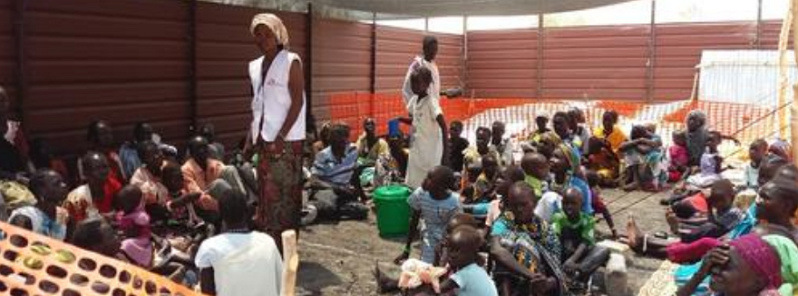Deadly tropical disease kala-azar outbreak in South Sudan

A deadly tropical disease, kala-azar has killed at least 52 people and sickened 2 447 in South Sudan so far in 2017, according to UN OCHA health partners who warn that many more were likely to be infected.
The parasitic kala-azar disease, which peaks between September to December, has almost always been fatal and can kill those with weak immune systems within weeks, according to health experts. By this time last year, 3 079 cases and 79 deaths were reported showing a significant reduction in both cases and deaths.
On October 8, 2017, the authorities in Malakal reported an upsurge in cases of kala-azar in Baliet County and called on health partners to scale up the response in affected areas.The majority of cases in 2017 have been reported from Lankien (907), Old Fangak (733), Kurwai (201), Walgak (122), Chuil (103), Malakal (96), Pagil (62) and Bunj (45). According to aid agencies, the disease was more prevalent among adults, but it also occurred among children.
Efforts to deal with the disease include training of health workers in case management, laboratory diagnosis, conducting surveillance in the affected areas, and stocking ample supplies of diagnostics and medicines at all designated treatment centers.
In an attempt to decrease vector-human contact, partners are also employing a multisectoral approach to prevent the spread of kala-azar in affected areas. From 21 to 22 September, aid agencies conducted a response mission to Canal/Pigi County in Jonglei.
The team conducted health consultations, nutrition assessment and distribution of high-energy biscuits. The response team also distributed mosquito nets to all children and women and conducted awareness on usage.
In Uror, in October, partners assessed the abandoned health care unit in Yuai, and delivered essential drugs to the health facility, where thousands of people were reported to have returned in recent days.
In Malakal, on October 5, partners conducted training in infectious disease control and waste management, targeting participants from private clinics and drug stores in the Malakal town and Protection of Civilians site.
High malnutrition rate, food insecurity, poor housing and environmental change favoring sandflies that spread kala-azar further escalate the problem. Despite the response efforts, the ongoing conflict and insecurity in most affected areas is preventing patients from seeking medical care services.
Provided by UN OCHA
Featured image credit: Riaz Hussain/MSF

Regarding public health matters: We would like to see more comments on the subject of ‘kundalini rising”, ‘transitioning’, ‘brain rewiring’, ‘kundalini–signs and symptoms’, that is sending thousands to these sites wondering what is going on with their nervous systems that is not treatable through conventional medicine. It appears the medical profession has a lot to learn about “The Biology of Kundalini” as described in the text book by Jana Dixon.